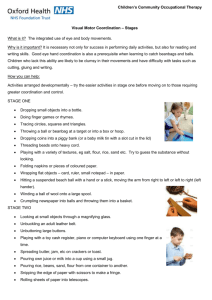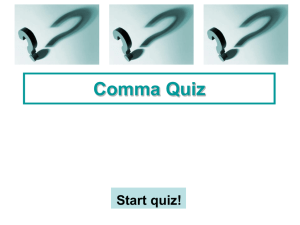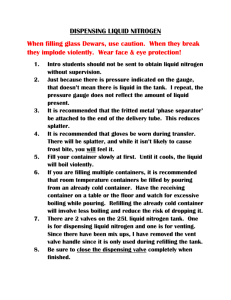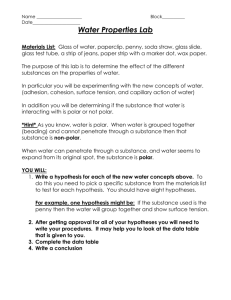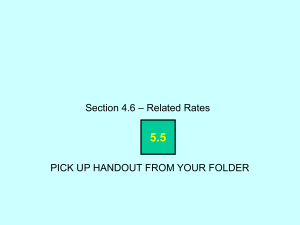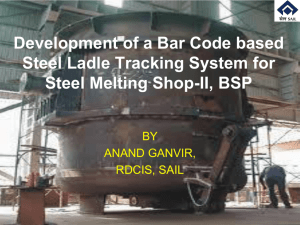Temperature control by process timer method - V
advertisement
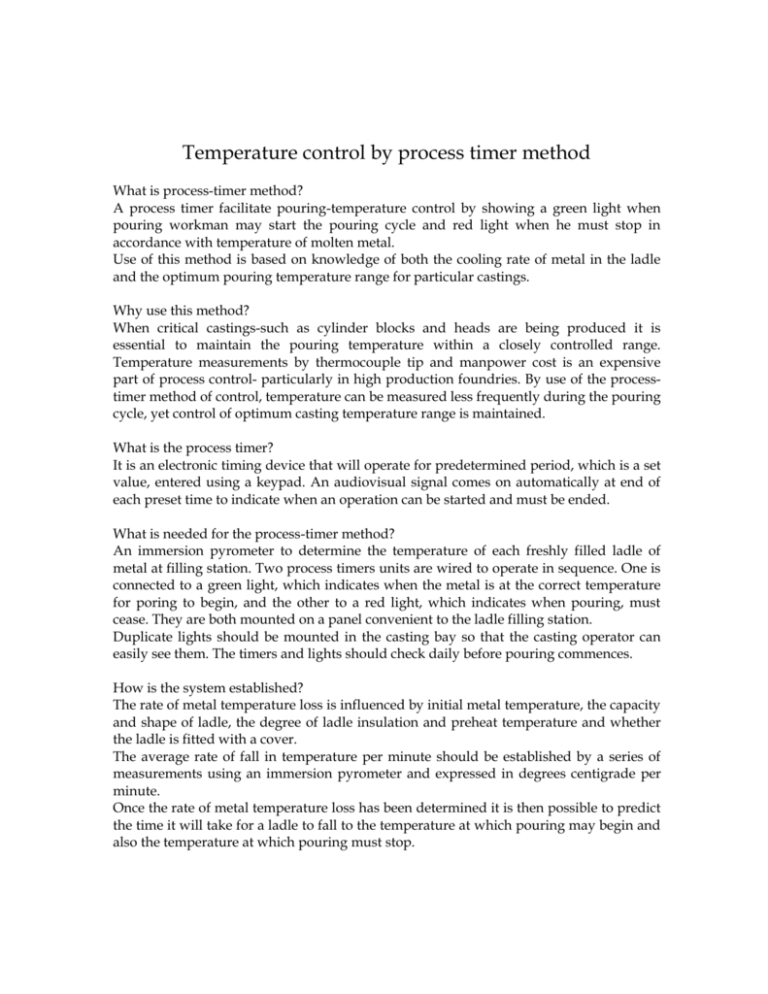
Temperature control by process timer method What is process-timer method? A process timer facilitate pouring-temperature control by showing a green light when pouring workman may start the pouring cycle and red light when he must stop in accordance with temperature of molten metal. Use of this method is based on knowledge of both the cooling rate of metal in the ladle and the optimum pouring temperature range for particular castings. Why use this method? When critical castings-such as cylinder blocks and heads are being produced it is essential to maintain the pouring temperature within a closely controlled range. Temperature measurements by thermocouple tip and manpower cost is an expensive part of process control- particularly in high production foundries. By use of the processtimer method of control, temperature can be measured less frequently during the pouring cycle, yet control of optimum casting temperature range is maintained. What is the process timer? It is an electronic timing device that will operate for predetermined period, which is a set value, entered using a keypad. An audiovisual signal comes on automatically at end of each preset time to indicate when an operation can be started and must be ended. What is needed for the process-timer method? An immersion pyrometer to determine the temperature of each freshly filled ladle of metal at filling station. Two process timers units are wired to operate in sequence. One is connected to a green light, which indicates when the metal is at the correct temperature for poring to begin, and the other to a red light, which indicates when pouring, must cease. They are both mounted on a panel convenient to the ladle filling station. Duplicate lights should be mounted in the casting bay so that the casting operator can easily see them. The timers and lights should check daily before pouring commences. How is the system established? The rate of metal temperature loss is influenced by initial metal temperature, the capacity and shape of ladle, the degree of ladle insulation and preheat temperature and whether the ladle is fitted with a cover. The average rate of fall in temperature per minute should be established by a series of measurements using an immersion pyrometer and expressed in degrees centigrade per minute. Once the rate of metal temperature loss has been determined it is then possible to predict the time it will take for a ladle to fall to the temperature at which pouring may begin and also the temperature at which pouring must stop. Table 1 – data for timer 1 – for a temperature loss in the ladle of 5C/minute Temperature in ladle at melting station 1470C 1460C 1450C 1440C To Start To Start To Start To Start pour at pouring pour at pouring pour at pouring pour at pouring after after after after preset preset preset preset 1460C 2 min 1450C 2 min 1450C 4 min 1440C 2 min 1440C 4 min 1440C 6 min 8 min 6 min 1430C 2 min 1430C 4 min 1430C 1430C 1420C 4 min 1420C 6 min 1420C 8 min 1420C 10 min 12 min 10 min 8 min 1410C 6 min 1410C 1410C 1410C Table 1 – data for timer 2 Maximum Minimum Range 1. Cylinder Head & Pump Body Castings 1430C 1390C 40C With 5C/min temperature drop, stop pouring after further 8 min 2.gearbox & valve body castings 1440C 1380C 60C 12 min 3.Head stock and slideway castings 1420C 1370C 50C 10 min Pouring-temperature Type of Casting Data needed for using the process timers. To simplify the control procedure the following information should be available on the board next to process-timer control box. For use with timer 1. A list of initial ladle temperatures and delays (minutes) to be preset is prepared and tabulated as in table 1. This example is based on 5C loss in temperature / minute I the ladle. For use with timer 2. Pattern having similar pouring ranges should be listed in groups. (Table 2) with their maximum and minimum pouring temperature, range and preset delay in minutes, this example is also based on a 5C loss in temperature / minute I the ladle. Example – using tabulated data The optimum pouring temperature range for a particular complicated cylinder block casting has been found tobe 1390C to 1430C. Pouring temperature above 1430C have been found to cause porosity problem in the cylinder bores below 1390C blow hole defects occur. Close control of pouring temperature within this range is therefore necessary to minimize scrap. Assuming the average metal temperature loss in the ladle is 5C/min and the temperature of metal in freshly filled ladle measured using an immersion pyrometers 1450C and therefore too hot for pouring to commence. It will take 4 minute for metal to reach 1430C the maximum casting temperature (see table 1) and further 8 minutes for it to reach minimum permissible casting temperature of 1390C (table 2) Using both tables the metal controller establishes for this cylinder block casting. Time delay (in minutes), before pouring should begin and time delay, in minutes, after which pouring should cease. He then sets timer 1 at 4 minutes and timer 2 at 8 minutes. He should press the start button as soon as he has set the timing sequence on both timers, a green light activated by timer 1 will then come on after 4 minutes indicating that pouring should commence, at this stage timer 2 will be activated and run for its preset time of 8 minutes after which red light will come on indicating that pouring must cease. The rest button then should be pressed to zero both timers. Where the pouring station is remote from the melting furnace area the signal light should be duplicated in the pouring bay, in a position easily seen by caster.
